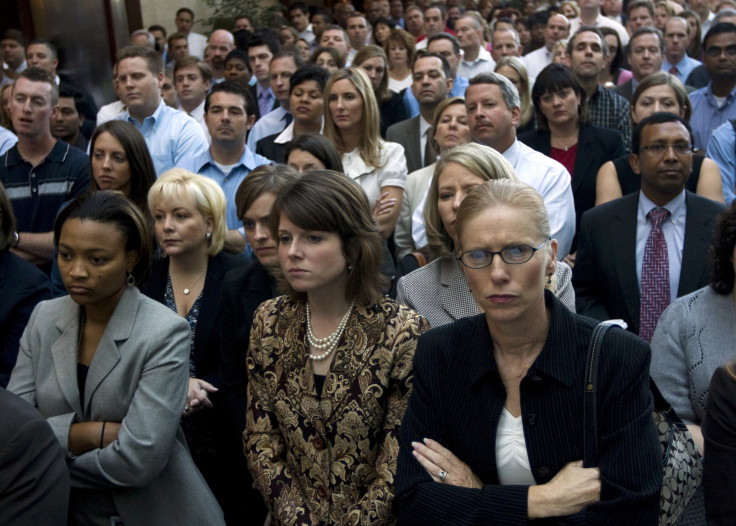Unions Are The Solution To Help Women Close The Equal Pay Gap, 2017 Study Says

Tuesday marked 2017’s Equal Pay Day, and recent data indicated women still earned 80 to 83 cents for every male dollar earned as of 2015, but one factor may substantially help to change that.
Female union members saw significantly narrower gender wage disparities than their nonunionized counterparts, the Economic Policy Institute found in a study released Monday. Overall, the Washington think tank said, unionized women earned 94 percent of what unionized white men earned, compared to nonunionized women, who earned 78 percent of what nonunionized men did.
Read: Gender Pay Gap May Be Closing In Tech Sector, Study Finds
Black female union members exhibited no pay gap with unionized black men while African-American women who were not union members made 88 percent of what nonunionized black men earned. Among Hispanic workers, unionized women earned 88 percent of what unionized men made while nonunionized women made 84 percent of what nonunionized Hispanic men did.
The difference may have something to do with the benefits of collective bargaining, as opposed to individual negotiation — something women tend to avoid. A 2007 study, for example, found that while half of men negotiated their salaries, only an eighth of women did the same.
The networking and career advancement site Levo found about a year ago that although 83 percent of millennial women saw negotiation as crucial, only 41 percent pushed for better salaries or benefits. And when a researcher performed an experiment in which women could negotiate on behalf of a friend, they won salaries equal to those of men, but won $7,000 less when negotiating on their own behalf.
Read: Women And Minority Board Members Are Paid Less, Study Finds
The most unionized industries also tended to fall relatively low on the list of the sectors ordered by the size of their gender pay gaps. Utilities, for example, the most unionized industry, according to the Bureau of Labor Statistics, was 11th on the list of the U.S. government's 20 sector categories ranked by the disparity between men’s and women’s median wages. Construction and educational services, also heavily unionized workforces, ranked low in terms of pay gap, with the major exception being the transportation and warehousing sector, which had the second-largest pay gap and was the second-most unionized industry.
The biggest gender pay gap is among personal financial advisers where women make 61.3 percent of what their male counterparts earn, according to BLS data.
Women actually do better than men in several occupations including as media producers and directors, cleaners of vehicles and equipment, wholesale and retail buyers and transportation security screeners.
© Copyright IBTimes 2025. All rights reserved.






















